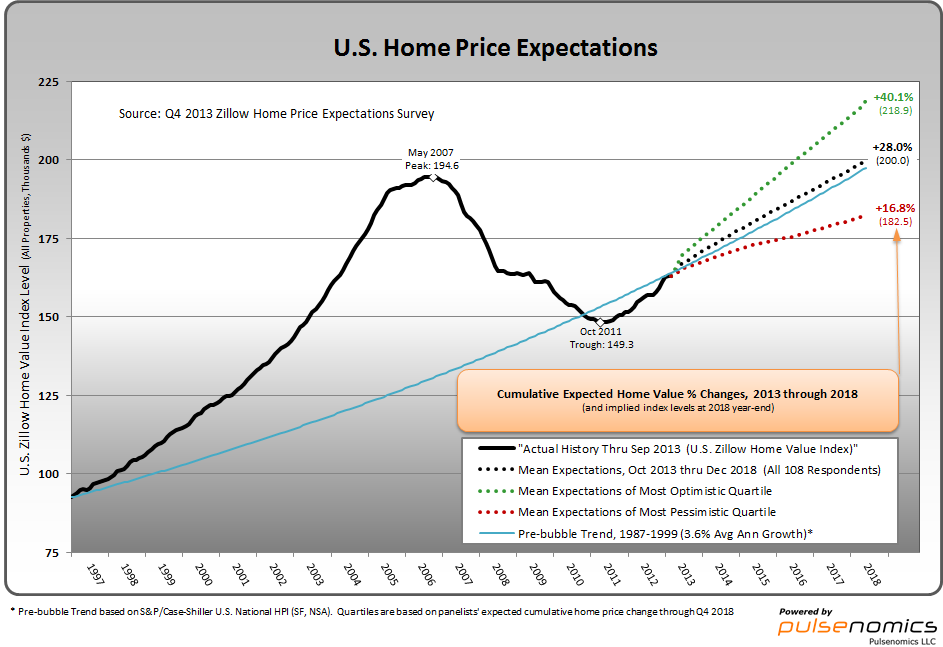On November 7, the Zillow Q4 2013 Home Price Expectations Survey results were released. This survey is done on a quarterly basis.
An excerpt from the Press Release:
The survey of 108 economists, real estate experts and investment and market strategists was sponsored by leading real estate information marketplace Zillow, Inc. and is conducted quarterly by Pulsenomics LLC.While appreciation is expected to remain strong through the remainder of this year, the pace of home value growth is predicted to slow considerably through 2018. Panelists said they expect appreciation rates to slow to roughly 4.3 percent next year, on average, eventually falling to 3.4 percent by 2018.Based on current expectations for home value appreciation over the next five years, panelists predicted that overall U.S. home values could exceed their May 2007 peak by the first quarter of 2018, and may cross the $200,000 threshold by the end of 2018.
Various Q4 2013 Zillow Home Price Expectations Survey charts are available, including that seen below:
As one can see from the above chart, the average expectation is that the residential real estate market, as depicted by the U.S. Zillow Home Value Index Level, will continually climb.
The detail of the Q4 2013 Home Price Expectations Survey (pdf) is interesting. Of the 108 survey respondents, only two (of the displayed responses) forecast a cumulative price decrease through 2018; and of those two, neither foresee a double-digit percentage cumulative price drop. The most “bearish” of these forecasts is that of Mark Hanson’s prediction of a 5.77% cumulative price decrease through 2018.
The Median Cumulative Home Price Appreciation for years 2013-2018 is seen as 6.00%, 11.07%, 14.99%, 18.84%, 23.25%, and 27.29%, respectively.
For a variety of reasons, I continue to believe that even the most “bearish” of these forecasts (as seen in Mark Hanson’s above-referenced forecast) will prove too optimistic in hindsight. From a longer-term historical perspective, such a decline is rather tame in light of the wild excesses that occurred over the “bubble” years.
I have written extensively about the residential real estate situation. For a variety of reasons, it is exceedingly complex. While many people continue to have an optimistic view regarding future residential real estate prices, in my opinion such a view is unsupported on an “all things considered” basis. Furthermore, (even) from these price levels there exists outsized potential for a price decline of severe magnitude, unfortunately. I discussed this downside, based upon historical price activity, in the October 24, 2010 post titled “What’s Ahead For The Housing Market – A Look At The Charts.”
_____
The Special Note summarizes my overall thoughts about our economic situation
SPX at 1752.31 as this post is written

No comments:
Post a Comment